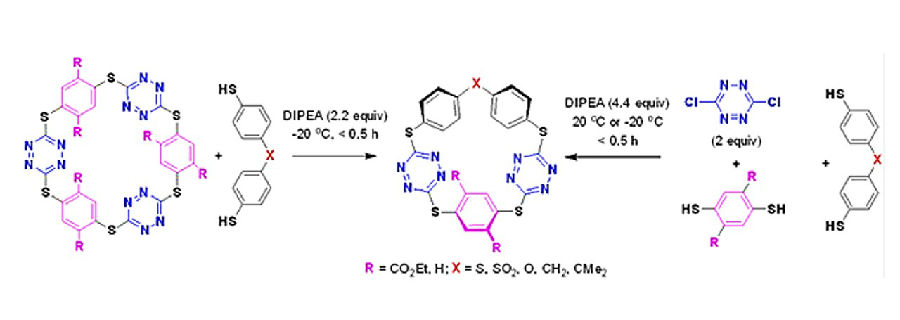Zhi-Chen Wu, an undergraduate in the Department of Chemistry, Tsinghua University, has recently published a paper on Angewandte Chemie International Edition as the first author. The paper which is entitled “Corona[5]arenes Accessed by a Macrocycle-to-Macrocycle Transformation Route and a One-Pot Three-Component Reaction” reports the latest development in the field of macrocyclic and supramolecular chemistry.
The past few decades have witnessed the establishment and rapid development of supramolecular chemistry owing to emergence of synthetic macrocyclic hosts. In 1967, Charles J. Pederson invented crown ethers. Soon after that Jean-Marie Lehn synthesized cryptands while Donald J. Cram investigated spherands. The in-depth studies of the molecular recognition and host-guest interactions of these functional macrocycles laid the foundation of supramolecular chemistry, and Pederson, Lehn and Cram won the Nobel Prize in Chemistry in 1987. By means of functionalized synthetic macrocycles as fundamental building blocks, Sir J. Fraser Stoddart and Jean-Pierre Sauvage have created mechanically interlocked molecules and later molecular machines. Their pioneering work was also recognized by the Nobel Prize in Chemistry in 2016. One of the challenges in supramolecular chemistry is still the design and synthesis of novel and functional macrocyclic hosts which have wide applications in molecular recognition and assembly.
Zhi-Chen Wu conducted a systematic study on the synthesis and property of corona[5]arenes. A “macrocycle-to-macrocycle” transformation method was developed, permitting the efficient synthesis of various corona[5]arenes from the known corona[6]arenes. The understanding of the driving forces for the “macrocycle-to-macrocycle” transformation in terms of thermodynamics and reaction kinetics led to the successful establishment of a one-pot three component reaction which enable the construction of corona[5]arenes from very simple starting materials. The conformational structure of all synthesized macrocycles was determined unambiguously and spectroscopic and electrochemical properties of corona[5]arenes were unraveled. The easy availability, unique conformational structure and electronic feature would render corona[5]arenes a promising type of macrocyclic hosts for the selective recognition of electron-rich guest species.

Figure. Construction of corona[5]arenes from “macrocycle-to-macrocycle” transformation reaction (left) and a one-pot three-component route (right)
Zhi-Chen Wu is the first author of the paper, and Prof. Mei-Xiang Wang is the corresponding author. Dr. Qing-Hui Guo, graduated from Tsinghua University in 2015, conducted part of the research.
Zhi-Chen Wu entered the Department of Chemistry, Tsinghua University in 2013 and next year he participated in Tsinghua Xuetang Elite Program. He became interested in organic chemistry research in 2015 by learning practical organic synthesis in Prof. Mei-Xiang Wang’s laboratory. Under the supervision of Prof. Wang, he then focused on the research project of corona[5]arenes.
Link of the paper:
http://onlinelibrary.wiley.com/doi/10.1002/anie.201703008/full